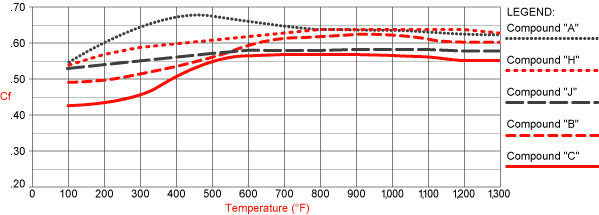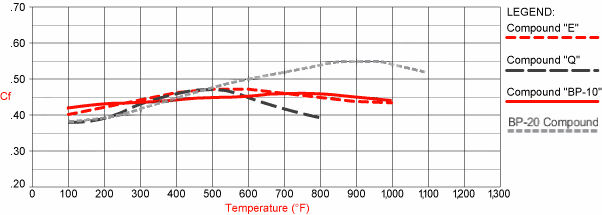Important
information regarding "brake bias" or "brake
balance"
A brake system is designed to change the forces
acting on the car; the obvious observation is that it decelerates the
car as a single mass. However, this is a simplistic view that
does not take into account other factors such as the car's
front-to-rear weight bias and more importantly, the shift in weight
bias that happens under braking, and in turn most importantly, what
effect that weight shift has on the suspension. A car's
stability in any direction is only as good as the connection between
the tires and road surface, and a sudden upset (such as excessive
unloading of the rear wheels) can upset this stability. The goal
of a good brake system is to maintain this balance.
Vehicle manufacturers take the vehicle dynamics into account when
designing the original brake system, and adjust the size of the
various components. These components include rotor
diameter, caliper piston size, caliper piston quantity, pad
dimensions, and even pad friction index (which varies by
compound). Some original equipment systems utilize different
types of pads front and rear to adjust bias as much as 15% instead of
modifying the mechanical components.
Aftermarket performance brake manufacturers should take all of those
factors into account when applying their components. They must
also analyze whether their pre-made components (specifically caliper
piston size) are too large or too small, and whether this affects bias
or is inappropriate for the car's hydraulic system:
-
In a front-only kit, having pistons that are the
wrong size for correct bias with the original rear brakes can
affect vehicle stability under braking and lengthen stopping
distances.
-
In a four-wheel kit, having pistons that are not
matched properly for the specific car's weight bias and suspension
setup can also affect vehicle stability and stopping distances.
-
Pistons that are too large for the original
hydraulic system can result in a soft or mushy brake pedal,
inconsistent brake response (first pedal push soft, second firm),
and difficulty in modulating or controlling the brake application.
UUC analyzes all of these factors during the
development of our performance brake packages. Our brake kits
are all vehicle-specific, and will even vary between two models
that would otherwise seem to be identical. For example, all of
our front-only kits are specifically tailored to provide ideal brake
bias with the original rears - this means that the "ideal"
kit for a 330i is very different than for a 323i due to different
original-equipment rear brakes and their specific hydraulic systems.
The result is that every fitment has the "ideal brake
bias" when using the UUC-specified brake package, with every
car having firm pedal, shortest stopping distances, and normalized
pad wear.
For advanced users, brake bias can be easily adjusted to
compensate for unique suspension setups, tire size changes, specific
track requirements, or driver preference using "brake pad
tuning".
By selecting different pads front and rear, bias can be shifted
forward or rearward as desired. Wilwood (and other pad
manufacturers such as Cobalt Friction) publishes the coefficient of
friction for each of their compounds (expressed as "Cf" or
the Greek letter "m",
as in "0.64m").
Wilwood goes one step further and provides data on the effect that
temperature has on the friction coefficient, which simplifies the
tuning for the actual operating temperature range of the brakes.
Cf is directly related to brake pad effectiveness, i.e. brake torque
generated:
WILWOOD TRACK / RACE COMPOUNDS

WILWOOD STREET COMPOUNDS

|
WHAT ABOUT "BRAKE BIAS" OR "BRAKE BALANCE"?
|
There are currently no
products
in
this category.
|
